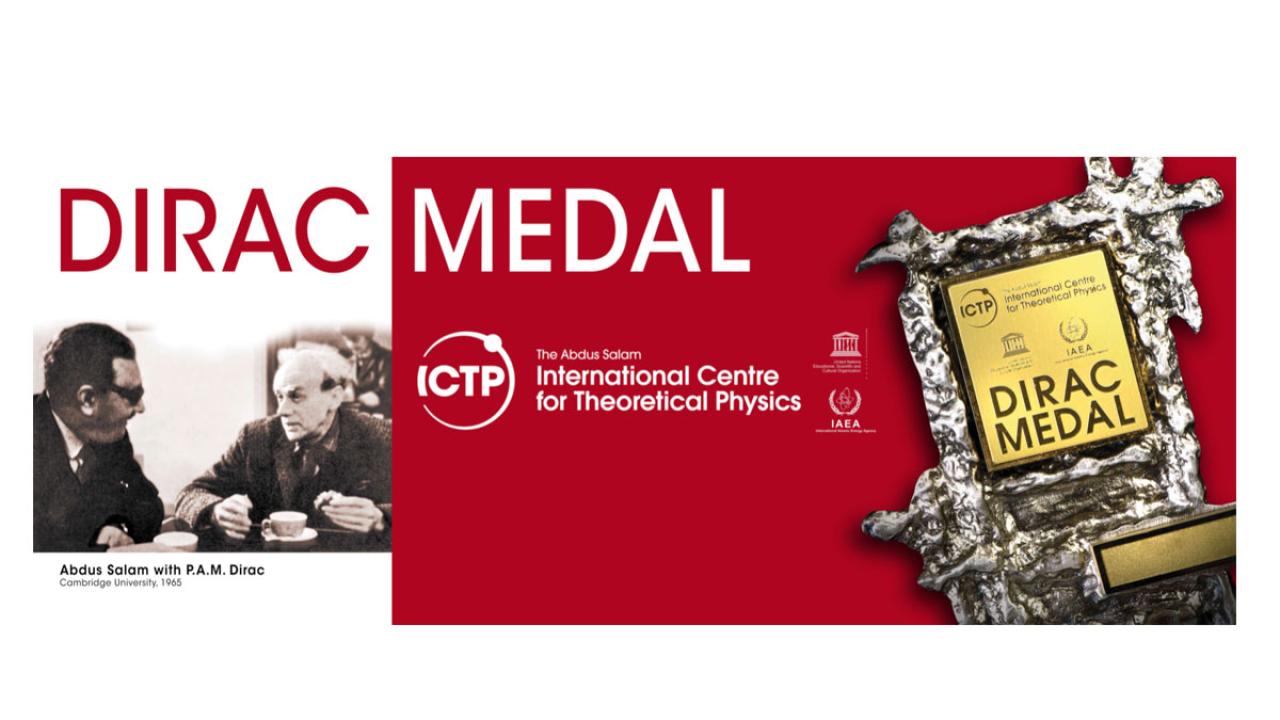
ICTP is proud to announce the Dirac Medalists for 2012, three condensed matter physicists who have furthered the understanding of the strange conductive qualities of topological insulators. The winners are Duncan Haldane of Princeton University, Charles Kane of the University of Pennsylvania, and Shoucheng Zhang of Stanford University.
A topological insulator is a substance that acts as an insulator with the bulk of its material. But it also conducts electricity along its surface as if the edge itself were a lower-dimensional metal attached to the material. This odd conductive property was first discovered in a strong magnetic field in what's called the Quantum Hall Effect. At certain values, the magnetic field blocks the motion of electrons in bulk, making the system insulating. But electrons slide freely along the edges and surfaces, carrying electrical currents from one side to the other. In 1980, scientists considered the Quantum Hall Effect bizarre because electrons in two dimensions are normally "localized" -- completely unable to conduct.
This effect was later observed in some physical materials as well. Scientists were surprised that a perfect conductance should arise despite rampant imperfections in the material. The key was that edge states had to exist for "topological" reasons, which protected them against the material's imperfections. One of the Dirac medalists, Haldane, set the foundations for that concept with his 1980s research on electron and spin systems in one-dimension. Kane opened up research to modern spin-orbit based topological insulators in studies with his University of Pennsylvania colleagues Eugene Mele and Liang Fu. Independently, Zhang greatly expanded the effect's theoretical infrastructure, and theoretically predicted the first topological insulator material in mercury telluride.
Many researchers are currently working to better understand topological insulators, as well as explore their potential applications. Many think topological insulators could play a part in advancing information and communications technology. "When developing nanosize electronics and pursuing coveted goals such as quantum computers, the availability of conducting channels that do not spoil and will work no matter what is something that seems quite important," said ICTP condensed matter physicist Erio Tosatti. "Beyond that, there is much beauty in these concepts."
ICTP's Dirac Medal, first awarded in 1985, is given in honour of P.A.M. Dirac, one of the greatest physicists of the 20th century and a staunch friend of the Centre. It is awarded annually on Dirac's birthday, 8 August, to scientists who have made significant contributions to theoretical physics. The Medallists also receive a prize of US$ 5,000. The Dirac Medal is not awarded to Nobel Laureates, Fields Medallists, or Wolf Foundation Prize winners, although many Dirac Medallists have proceeded to win these prestigious prizes.
For more details about the Dirac Prize, please see the webpage.
















